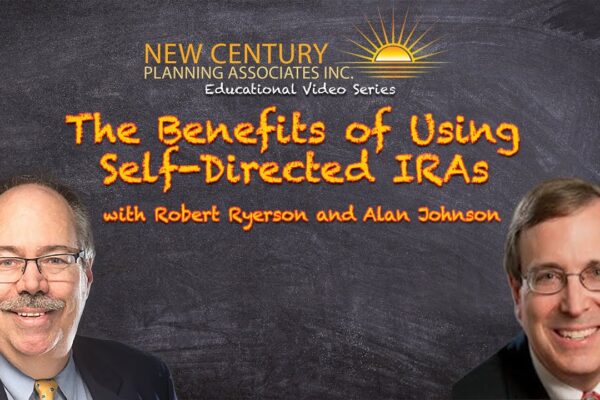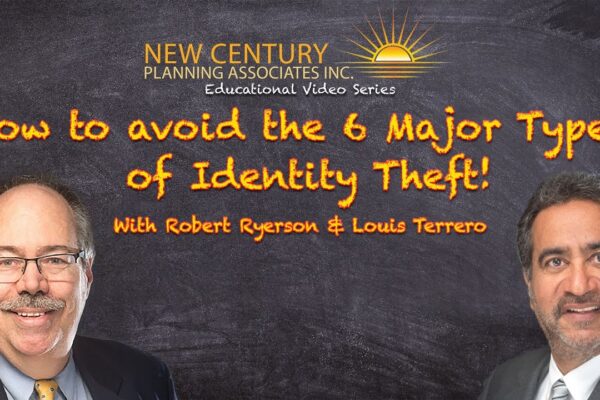5 Mistakes to Avoid When Planning for Retirement
Investing can sometimes appear to be a daunting task that many Americans would rather not attempt. In fact, only about 55% of Americans have actually invested in the stock market, and that number has remained fairly stable over the course of at least the last decade. While investing might seem intimidating, it is an essential way to ensure that you will have what you’ll need for a comfortable retirement. It might be a mistake to try and rely solely on other assets. With the help of a good financial planner, you can obtain solid guidance on how to invest your money. If you’re going at it alone without an advisor, you should keep in mind these common investing mistakes that could potentially have repercussions when it comes to your retirement savings.
 Having No Plan at All
Having No Plan at All
For many people, the most common investing mistake that they make is not having any plan at all for their investments. While saving is certainly a good first step in planning for retirement, it would be a mistake to depend solely on your savings to carry you through retirement. For all but the wealthiest people, there must come a time when your accumulated assets become oriented toward the generation of income for retirement expenses. Assets in various accounts are not income-they are assets! Unless you build intentional and lifelong income streams ( using investment vehicles specifically designed for income), you can deplete too much capital in a prolonged low interest rate environment, or in negative market cycles. Compounding works both ways. If you are relying solely on mutual funds or stocks for your retirement income above and beyond Social Security ( and a pension if you will have one) there is a very real danger that your withdrawals in down market years will make it much harder to recover, and hasten the possibility of running out of money. Instead, you should consider the first step and make additional plans to have safe and secure investment accounts that can help to supplement your savings during retirement. Otherwise you may find yourself stuck with significantly less retirement income than you may have expected.
 Placing Too Much Trust in Your 401(k)
Placing Too Much Trust in Your 401(k)
Having a 401(k) available to you is a great step forward in saving for retirement. But again, just like you should not rely solely on your savings accounts, you should probably not depend on your 401(k) alone to get you through retirement. When it comes to many 401(k)s, you as the account holder do not have much control over how the investments are chosen, leaving you to rely solely on whatever strategy the fund manager chooses for asset allocation. If you like to be hands-on with your investments, you may want to look into some additional retirement accounts that offer you a bit more freedom in terms of how you can invest your money. Additionally, although much of the appeal of the traditional 401(k) is the ability to save money pre-tax, these accounts are subject to taxes at your current income level when you begin to withdraw the funds. Depending on your financial situation, that could mean you will pay a significant amount in extra taxes during retirement. Since every dollar coming out of a 401k or IRA rollover is taxed as ordinary income, these withdrawals can also make your Social Security taxable as well. Converting these funds to ROTH status over several years will eliminate or possibly greatly reduce the taxes due on your Social Security, and also shelter all of that money from all future tax increases that may come down the road.
 Failing to Diversify
Failing to Diversify
In any type of investment strategy, but particularly in regards to your retirement savings, it is important to develop a portfolio that can withstand fluctuations in the market and remain stable in spite of some expected volatility. This means that you will want to ensure that your investment portfolio is “diversified,” meaning that your investments should be spread across different asset classes and types of investments. You will want a mixture of US stocks, Treasury securities, foreign stocks, real estate, and other items, such as precious metals and natural resources, in which you have an interest. This act of diversifying your portfolio will help to protect your accounts from fluctuations in the market in one specific area.
 Not Reassessing Your Strategy
Not Reassessing Your Strategy
At various points in your life leading up to retirement, you will need different kinds of investment strategies. Many experts advise that the most aggressive investment strategies should be undertaken early on in your life when you still have time to make up losses. As you approach retirement age, your portfolio should slowly become more conservative in order to protect your savings from potential downturns in the market. One mistake that people often make with their investment and retirement accounts is not taking the time to reassess their investment strategies every few years or so. Doing so will help to ensure that your investments are working for you in the best way possible, no matter what your stage of life. As mentioned above, under the “Having no plan at all” section, for almost all people, there needs to be a period of transition from a pure accumulation and long term growth focus, to more of a preservation of capital and income generation focus, in the last few years before your retirement.
 Timing the Market
Timing the Market
Timing the market involves trying to sell various investments at their highest value and buying them when they are at their lowest, thereby cashing in on higher returns. However, trying to time the market can be extremely tricky, and if you guess wrong, it could cost you thousands out of your savings. Instead of trying to do so, a better investment strategy is to save for the long term. While adopting a long term focus is imperative ( many retirements today will last 20-30 years or more), a simple “buy and hold” strategy can be deadly if you go through a prolonged period of market underperformance, and you need to take withdrawals for living expenses and lifestyle desires in retirement. For example, the S&P 500 Index first reached the 1500 level in January of 2000, and then did not return to that level until March of 2013-a period of 13 years and 3 months of a 0% return, before fees and any withdrawals! While these long periods of poor performance are not common, they can occur at any time, and most people cannot afford to wait through a 10-15 year period to just break even, or to take needed income. The solution is to devote a significant portion of your accumulated retirement assets ( whatever amount you do not want to go risk going through a 5 or 10 or 15 year period of poor returns with) to a principal-protected vehicle or vehicles that will provide income for you, for as long as you live
Saving for retirement is essential, and investments can certainly help you to achieve your retirement goals. If you have not yet done so, consider working with a financial planner who can help you to develop an effective strategy to save for retirement. Financial planners can not only serve as an invaluable resource when you’re trying to decide how and where to invest your funds, but they can help to increase your chances of achieving the retirement that you’ve always wanted.
Author
Robert Ryerson
Although Robert M. Ryerson completed all the necessary requirements to earn bachelor of arts degrees in both English and economics at Rutgers University, college policy at the time prohibited the issuance of dual degrees. As a result, he graduated from Rutgers with a single bachelor of arts in economics before finding employment as a stockbroker with Shearson Lehman American Express in New York City 1984. Robert M. Ryerson has since established himself as a respected estate administrator and legacy planner. In addition to his economics degree from Rutgers, Mr. Ryerson holds several professional designations including Retirement Income Certified Professional (RICP)®; Certified In Long Term Care (CLTC)®; Certified Financial Fiduciary (CFF)®, and Certified Identity Theft Risk Magenament Specialist (CITRMS)®. He has shared his knowledge on the subject of identity theft as the author of the book What’s The Deal With Identity Theft?: A Plain-English Look at Our Fastest Growing Crime. He has also covered identity theft issues directly for students as the instructor of the adult education course Understanding Identity Theft: Our Fastest Growing Crime.






